Welcome to our free classical music site

Do you write about classical music? Are you a blogger? Want to team up with Classical Connect? Send us a message, let's talk!

Do you write about classical music? Are you a blogger? Want to team up with Classical Connect? Send us a message, let's talk!
This Week in Classical Music: April 20, 2020. Maderna and more. Tomorrow, on April 21st we’ll celebrate the 100th anniversary of the birth of the Italian composer Bruno Maderna.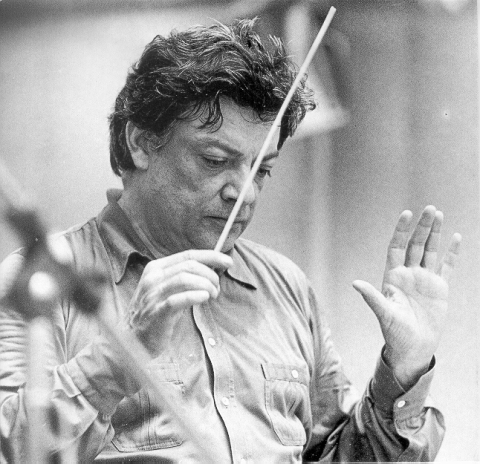 Maderna, one of the most important avant-garde composers of the 20th century, was born in Venice. A child prodigy, he played the violin and, at the age of 12 conducted the orchestra of La Scala. He was noticed and celebrated by Mussolini’s cultural authorities. In 1941-42 Maderna studied with the eminent composer Gian Francesco Malipiero. Later he studied conducting with Hermann Scherchen, an influential interpreter of the music of Mahler (later in his life Maderna also became a very successful interpreter of Mahler’s music. At the end of the 1940s Maderna got involved with a group of musicians at Darmstadt, among whom were the young Pierre Boulez, Olivier Messiaen, John Cage, Luigi Nono and Karlheinz Stockhausen. Another young Italian composer associated with Maderna was Luciano Berio, with whom he established Studio di fonologia musicale di Radio Milano, which facilitated their research into electonic music. In the 1960s and ‘70s Maderna spent a lot of time in the US, performing with contemporary ensembles but also conducting at established venues like Tanglewood, where he was appointed director of new music and working with major orchestras in New York, Boston and Chicago. Maderna died in Darmstadt on November 13th of 1973 of cancer. Maderna’s music was highly influential, though, like the music of his Darmstadt colleagues, not easy on the first hearing. His output was broad: he composed many symphonic pieces, chamber music and several concertos for different instruments, from the piano to the oboe. Here’s his rather short (less than 12 minutes) concerto for two pianos from the early period: it was written in 1948. It’s performed by the Italian pianists Aldo Orvieto and Fausto Bongelli, with the ensemble “Orchestra Della Fondazione Arena Di Verona,” Carlo Miotto conducting.
Maderna, one of the most important avant-garde composers of the 20th century, was born in Venice. A child prodigy, he played the violin and, at the age of 12 conducted the orchestra of La Scala. He was noticed and celebrated by Mussolini’s cultural authorities. In 1941-42 Maderna studied with the eminent composer Gian Francesco Malipiero. Later he studied conducting with Hermann Scherchen, an influential interpreter of the music of Mahler (later in his life Maderna also became a very successful interpreter of Mahler’s music. At the end of the 1940s Maderna got involved with a group of musicians at Darmstadt, among whom were the young Pierre Boulez, Olivier Messiaen, John Cage, Luigi Nono and Karlheinz Stockhausen. Another young Italian composer associated with Maderna was Luciano Berio, with whom he established Studio di fonologia musicale di Radio Milano, which facilitated their research into electonic music. In the 1960s and ‘70s Maderna spent a lot of time in the US, performing with contemporary ensembles but also conducting at established venues like Tanglewood, where he was appointed director of new music and working with major orchestras in New York, Boston and Chicago. Maderna died in Darmstadt on November 13th of 1973 of cancer. Maderna’s music was highly influential, though, like the music of his Darmstadt colleagues, not easy on the first hearing. His output was broad: he composed many symphonic pieces, chamber music and several concertos for different instruments, from the piano to the oboe. Here’s his rather short (less than 12 minutes) concerto for two pianos from the early period: it was written in 1948. It’s performed by the Italian pianists Aldo Orvieto and Fausto Bongelli, with the ensemble “Orchestra Della Fondazione Arena Di Verona,” Carlo Miotto conducting.
One of the greatest composers of the first half of the 20th century, Sergei Prokofiev was born on April 23 of 1891, though not all sources agree on the date: the English-language Wikipedia says it’s April 27th. Prokofiev himself celebrated his birthday on the 23rd and that’s the date we use. Next year is his 130th anniversary, and we will dedicate a full entry to him.
Yehudi Menuhin, one of the greatest violinists of the 20th century, was born in New York on April 22nd of 1916. Here’s what we wrote about him last year.
And finally, the British conductor John Eliot Gardiner, a brilliant interpreter of the music of Bach, was born on this day in 1943. We have several samples of his work in our library, mostly Bach’s oratorios. In 2000 Gardiner, together with his ensembles, English Baroque Soloists and the Monteverdi Choir, set out on what Gardiner called his Bach Cantata Pilgrimage. For a full year they traveled around Europe and the US performing all Bach’s oratorios: a triumphm, both musically and logistically.Permalink
This Week in Classical Music: April 13, 2020. Easter and three pianists. Yesterday was Easter Sunday, the beginning of the Easter Season, and we wish everybody a happy Easter. Around this time we usually play Bach’s music: he wrote some of his greatest pieces for this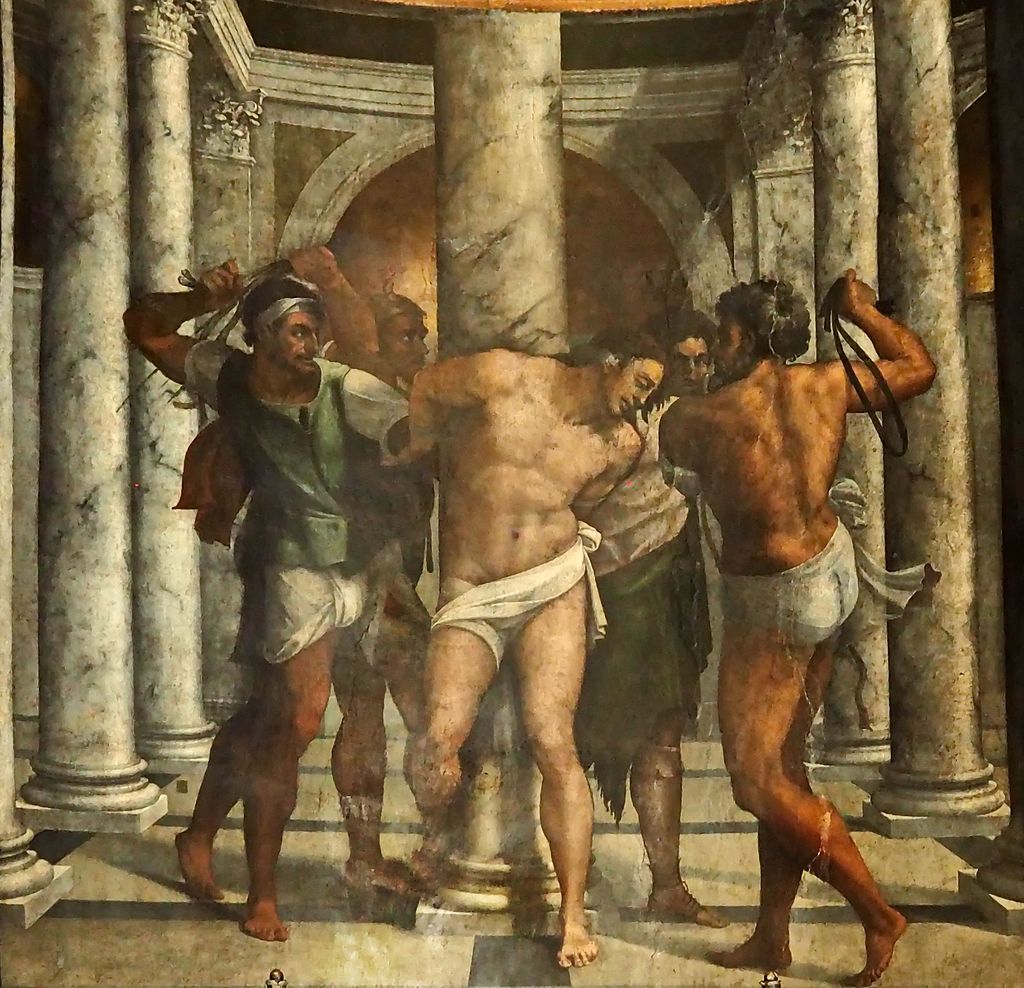 occasion, such as two complete Passions, the St. John and St. Matthew (his St. Mark’s Passion is lost; it’s assumed by musicologists that it was mostly a “parody,” meaning that Bach recycled some of his previously written music. The St. Luke Passion, previously attributed to Bach, is almost certainly not his own). Bach’s friend Georg Philipp Telemann also wrote a number of Passion Oratorios. They are not well known and aren’t performed as often as Bach’s. While we realize that they are not on the same plane, we find their music much worthy of your attention. Here’s the first section of Telemann’s oratorio Das selige Erwägen des bittern Leidens und Sterbens Jesu Christi (Blessed Contemplation of the Bitter Suffering and Dying of Jesus Christ) – about 20 minutes of music. Ensemble L'arpa festante is conducted by Wolfgang Schäfer.
occasion, such as two complete Passions, the St. John and St. Matthew (his St. Mark’s Passion is lost; it’s assumed by musicologists that it was mostly a “parody,” meaning that Bach recycled some of his previously written music. The St. Luke Passion, previously attributed to Bach, is almost certainly not his own). Bach’s friend Georg Philipp Telemann also wrote a number of Passion Oratorios. They are not well known and aren’t performed as often as Bach’s. While we realize that they are not on the same plane, we find their music much worthy of your attention. Here’s the first section of Telemann’s oratorio Das selige Erwägen des bittern Leidens und Sterbens Jesu Christi (Blessed Contemplation of the Bitter Suffering and Dying of Jesus Christ) – about 20 minutes of music. Ensemble L'arpa festante is conducted by Wolfgang Schäfer.
Artur Schnabel, the great Austrian pianist, was born on April 17th of 1882 in a small town of Lipnik (then Kunzendorf) in the Austro-Hungarian Empire. Today the town is in Poland. His family was Jewish: Schnabel’s birth name was Aaron. When he was two, the family moved to Vienna. At the age of nine Schnabel became a pupil of the famous pianist and pedagogue Theodor Leschetizky who later told Schnabel: “You will never be a pianist; you are a musician.” In 1898 Schnabel moved to Berlin. In his youth, his repertoire was very broad: in addition to his beloved Beethoven, he played other German greats - Mozart, Schubert, Schuman and Brahms. But he also played a lot of Chopin, Liszt and other Romantics. He formed a quartet with the violinist Bronisław Huberman, Paul Hindemith, who was not only a composer but also an excellent violist, and the cellist Gregor Piatigorsky. Later in his career Schnabel narrowed his repertoire, concentrating on Schubert and especially Beethoven. In Beethoven he excelled; no pianist before him, and very few after, played Beethoven with such depth. In 1933 Schnabel emigrated from Germany first to England and then, in 1939, to the US. He mother stayed in Vienna and in 1942, at the age of 83, she was deported to Theresienstadt, where she died two months later. Schnabel, who after the war played in many European countries, never returned to either Austria or Germany. Schnabel was the first pianist to record all of Beethoven’s piano sonatas. Even though one can hear some technical flaws, these recording stand out, even all these years later. As Harold Schonberg, the music critic, said of Schnabel, he was "the man who invented Beethoven.”
Two Soviet pianist, both winners of the Tchaikovsky Competition, were also born this week: Grigory Sokolov in Leningrad on April 18th of 1950 and Mikhail Pletnev in Arkhangelsk on April 14th of 1957. Sokolov won the 1966 Tchaikovsky Competition at the age of 16. Pletnev won his in 1978, at 21. Sokolov emigrated to Europe and developed a cult following there; Pletnev stayed in the Soviet Union and made a brilliant career, both as a pianist and conductor.
The Flagellation, above, was painted in 1516 by the great Italian, Sebastiano del Piombo; it’s based on a drawing by Michelangelo.Permalink
This Week in Classical Music: April 6, 2020. Merulo and the painters. Claudio Merulo, the famous Italian composer, keyboardist and music publisher of the Renaissance, was born on April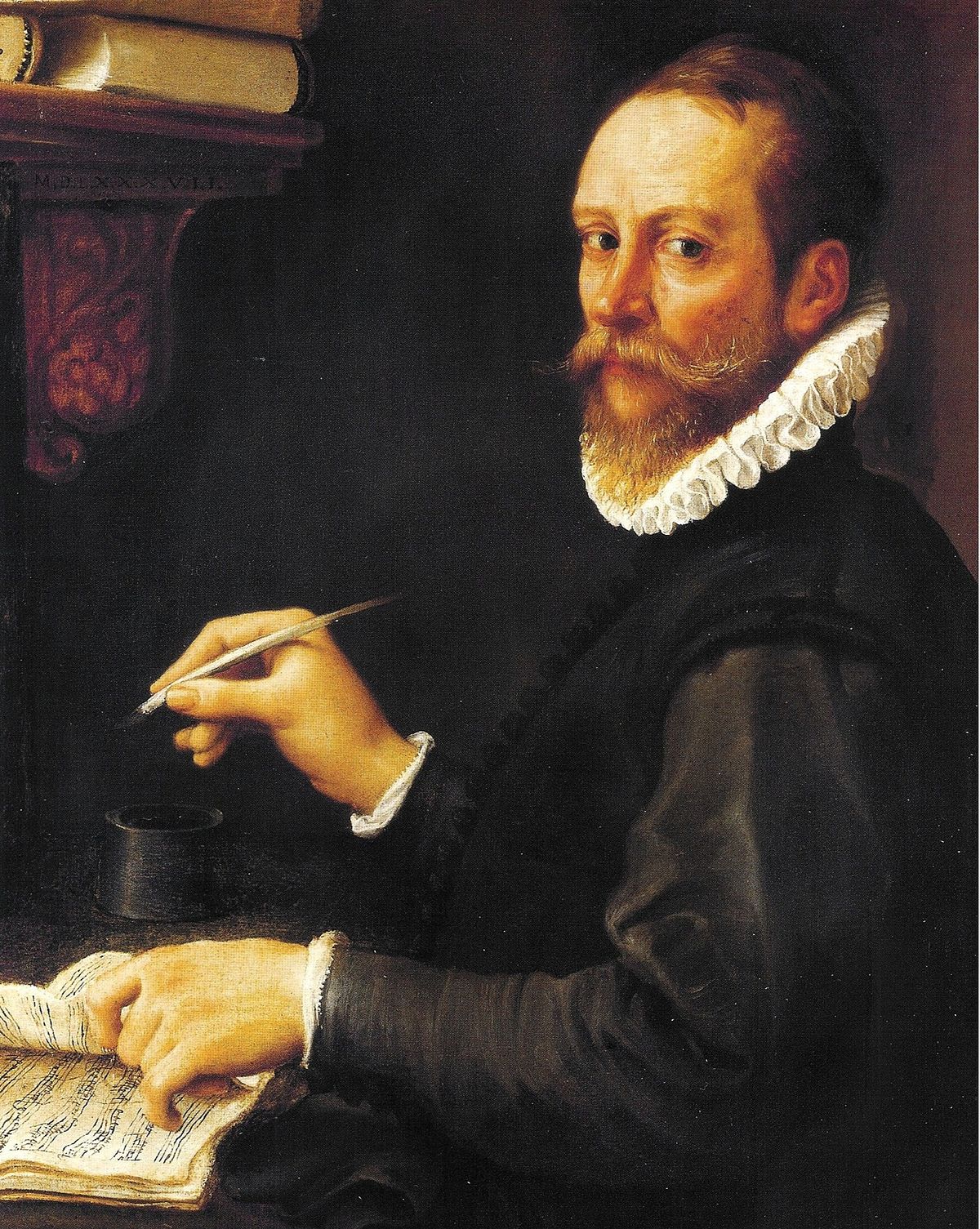 8th of 1533 in Correggio, a town in the Emilia-Romagna (Correggio is also the birthplace of the famous High Renaissance painter who took his name after the town). In Correggio, Merulo studied with Tuttovale Menon, a composer who had previously worked at the court of Ferrara, one of the musical centers of Italy. Merulo probably also studied with Adrian Willaert in Venice. At the age of 23, he was appointed organist at Brescia Cathedral. Just one year later, he was elected the second organist at the Basilica of San Marco in Venice (the basilica had two organs), even though a luminary like Andrea Gabrieli was also in contention. When in 1566 Merulo took over the position of the first organist, Gabrieli was made the second organist. Merulo stayed at San Marco for 27 years; this was a very productive period, as he composed music for services at the basilica and secular music, for the festivities thrown by the city and its nobility. In 1584 Merulo left Venice and moved to Parma to serve at the court of Duke Ottavio Farnese. He was made organist of the Cathedral of Parma, married (for the third time) a local noblewoman and lived, quite prosperously, in a large house near the Cathedral. He died in Parma on May 4th of 1604. The dome of the Parma Cathedral is famous for a large fresco, Assumption of the Virgin, that covers its dome. The creator of this fresco is none other than Antonio da Correggio.
8th of 1533 in Correggio, a town in the Emilia-Romagna (Correggio is also the birthplace of the famous High Renaissance painter who took his name after the town). In Correggio, Merulo studied with Tuttovale Menon, a composer who had previously worked at the court of Ferrara, one of the musical centers of Italy. Merulo probably also studied with Adrian Willaert in Venice. At the age of 23, he was appointed organist at Brescia Cathedral. Just one year later, he was elected the second organist at the Basilica of San Marco in Venice (the basilica had two organs), even though a luminary like Andrea Gabrieli was also in contention. When in 1566 Merulo took over the position of the first organist, Gabrieli was made the second organist. Merulo stayed at San Marco for 27 years; this was a very productive period, as he composed music for services at the basilica and secular music, for the festivities thrown by the city and its nobility. In 1584 Merulo left Venice and moved to Parma to serve at the court of Duke Ottavio Farnese. He was made organist of the Cathedral of Parma, married (for the third time) a local noblewoman and lived, quite prosperously, in a large house near the Cathedral. He died in Parma on May 4th of 1604. The dome of the Parma Cathedral is famous for a large fresco, Assumption of the Virgin, that covers its dome. The creator of this fresco is none other than Antonio da Correggio.
During his life Merulo was known for his keyboard compositions. We’ll hear three pieces by Merulo: one for the organ, Toccata quinta del secondo tono, from Merulo’s First Book of Organ Toccatas (here). It’s performed by the organist Massimiliano Raschietti. Here’s a piece for the harpsichord, Ricercare primo. It’s performed by Marco Mencoboni. And finally, some music that is not for a keyboard instrument. Merulo wrote many motets and madrigals. Here’s a motet, Innocentes pro Christo, from his Libro Primus Sacrarum Cantionum. It’s performed by the Modus Ensemble, Mauro Marchetti conducting.
The portrait, above, is by Annibale Caracci, renowned for his frescoes in the Palazzo Farnese in Rome. Caracci was born in Bologna, a city in Emilia-Romagna not far from Merulo’s Correggio.Permalink
This Week in Classical Music: March 30, 2020. Haydn and Busoni. Franz Joseph Haydn was born on March 31st of 1732. We love him and think he’s been somewhat under-appreciated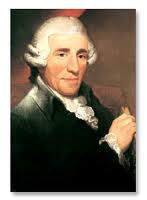 lately. In the time of the coronavirus, what can be better than some of the most optimistic, humorous and at the same time sophisticated music ever written? Here, for example, is Haydn’s Symphony no. 70. It was premiered on December 18th, 1779. Haydn was then employed by Prince Nikolaus Esterházy and worked most of the time at his immense Esterháza palace in what is now Hungary, not far from the Austrian border. The prince decided to build an opera house on his estate and Haydn composed a symphony to commemorate the event. In this recording Christopher Hogwood is leading The Academy of Ancient Music.
lately. In the time of the coronavirus, what can be better than some of the most optimistic, humorous and at the same time sophisticated music ever written? Here, for example, is Haydn’s Symphony no. 70. It was premiered on December 18th, 1779. Haydn was then employed by Prince Nikolaus Esterházy and worked most of the time at his immense Esterháza palace in what is now Hungary, not far from the Austrian border. The prince decided to build an opera house on his estate and Haydn composed a symphony to commemorate the event. In this recording Christopher Hogwood is leading The Academy of Ancient Music.
Last week we wrote about the pianist Egon Petri, who was a close friend of the pianist and composer Ferruccio Busoni. April 1st is Busoni’s birthday; he was born in 1866. An Italian by birth (he was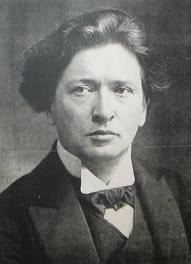 from Empoli, Tuscany), Busoni spent most of his life outside of Italy. He lived twenty formative years, from 1893 to 1913, in Berlin and returned to the city after the Great War years that he spent in Switzerland. Busoni was probably the most famous and influential pianist of the late-19th to early-20th century, though he thought of himself as a composer first. The pianist John Ogdon was a big proponent of Busoni’s music, though we tend to agree with Alfred Brendel who called his piano concerto “overwritten” – and we think much of Busoni’s music is. On the other hand, his transcriptions of Bach’s works are standard in the piano repertory, and for good reason.
from Empoli, Tuscany), Busoni spent most of his life outside of Italy. He lived twenty formative years, from 1893 to 1913, in Berlin and returned to the city after the Great War years that he spent in Switzerland. Busoni was probably the most famous and influential pianist of the late-19th to early-20th century, though he thought of himself as a composer first. The pianist John Ogdon was a big proponent of Busoni’s music, though we tend to agree with Alfred Brendel who called his piano concerto “overwritten” – and we think much of Busoni’s music is. On the other hand, his transcriptions of Bach’s works are standard in the piano repertory, and for good reason.
Another pianist/composer, probably as famous a pianist and a much better composer -- Sergei Rachmaninov – was also born this week, and, like Busoni, on April 1st, but seven years later, in 1973. Like Busoni, Rachmaninov spent much of his life away from his motherland, except that Busoni left Italy on his own volition whereas Rachmaninov was practically forced to emigrate from Russia after the October Revolution of 1917. Here’s an early Edison recording from April 23, 1919. Rachmaninov plays his own Prelude in C-sharp minor, Op. 3, No. 2.
April 1st is rich on birthdays: a wonderful pianist, Dinu Lipatti, was born on that day in 1917. We wrote about him here.
Let’s not forget the conductors: Christian Thielemann, the Chief Conductor of the Staatskapelle Dresden and the Music Director of the Bayreuth Festival (who is also known for a number of controversial remarks) was born on that same day, April 1st, in 1959. Herbert von Karajan, born on April 5th of 1908, was one of Thielemann mentors. Also, the great conductor and music figure, Pierre Monteux, was born on April 4th of 1875.
We have to end on sad news: we’ve learned that the great Polish composer Krzysztof Penderecki died yesterday, April 29th of 2020 in his home in Kraków, Poland after a long illness. He was 86.Permalink
This Week in Classical Music: March 23, 2020. Schreker and Petri. Two 20th century composers were born this week: Béla Bartók, one of the most interesting composers of the first half of the century, and Pierre Boulez, who influenced many during the second half of it. Bartók was born March 25th of 1881, Boulez – on March 26th of 1925. Another composer, now almost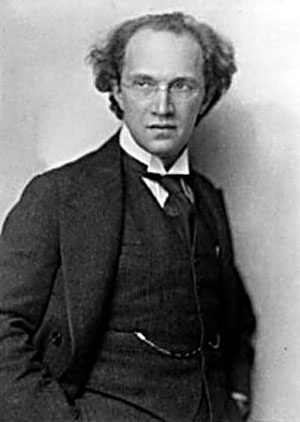 forgotten but at his time quite famous, Franz Schreker, was born on this day in 1878 in Monaco, where his father, an itinerant court photographer – a profession possible only in the late 19th century – was working at the time. Schreker, an Austrian, became prominent in Vienna as an opera composer: one music critic even compared him with Wagner; at the peak of his career, in early 1920s, he was one of the most celebrated composers in German-language lands. Things changed dramatically in the late 1920s: two of his operas premiers were unsuccessful, then the financial crisis put pressure on all opera houses, later the right-wingers and the Nazis forced cancellations of many performances of his music (Schreker’s father, the court photographer, happened to be Jewish), and when the Nazis came to power Schreker was forced to resign all his positions. In December of 1933 he suffered a stroke and died in Berlin on March 21st of 1934, two days before his 56th birthday. Here’s his Kammersymphonie composed during WWI, in 1916. It’s performed live by the Saint Paul Chamber Orchestra with Edo de Waart conducting.
forgotten but at his time quite famous, Franz Schreker, was born on this day in 1878 in Monaco, where his father, an itinerant court photographer – a profession possible only in the late 19th century – was working at the time. Schreker, an Austrian, became prominent in Vienna as an opera composer: one music critic even compared him with Wagner; at the peak of his career, in early 1920s, he was one of the most celebrated composers in German-language lands. Things changed dramatically in the late 1920s: two of his operas premiers were unsuccessful, then the financial crisis put pressure on all opera houses, later the right-wingers and the Nazis forced cancellations of many performances of his music (Schreker’s father, the court photographer, happened to be Jewish), and when the Nazis came to power Schreker was forced to resign all his positions. In December of 1933 he suffered a stroke and died in Berlin on March 21st of 1934, two days before his 56th birthday. Here’s his Kammersymphonie composed during WWI, in 1916. It’s performed live by the Saint Paul Chamber Orchestra with Edo de Waart conducting.
The German pianist Egon Petri was also born on this day, in 1881 in Hanover. As a child he studied violin and the piano, and later the organ and the horn. It was the classes with Ferruccio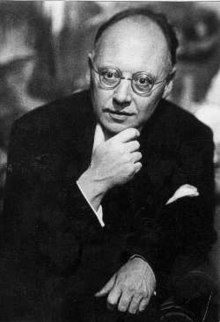 Busoni that convinced young Petri that the piano was his instrument. Petri later worked as Busoni’s assistant and generally considered himself his disciple rather than his student. Under Busoni’s influence Petri immersed himself into Bach’s music, not only performing it but also editing, with Busoni, the 25-volume edition of Bach’s clavier compositions. In 1923 he became the first foreign musician to tour the Soviet Union; his success there was tremendous. In the late 1920s Petri moved to Zakopane, Poland, where he established a music school. He escaped when Germany invaded Poland at the beginning of WWII and eventually settled in the US. He taught at Cornell first, and then settled in California where he became famous as a pedagogue. Petri refused to play in Germany and never did. He died in Berkeley on May 27th of 1962. Here is a 1942 recording of Petri playing four of Bach’s chorale preludes, arranged for the piano by Busoni.Permalink
Busoni that convinced young Petri that the piano was his instrument. Petri later worked as Busoni’s assistant and generally considered himself his disciple rather than his student. Under Busoni’s influence Petri immersed himself into Bach’s music, not only performing it but also editing, with Busoni, the 25-volume edition of Bach’s clavier compositions. In 1923 he became the first foreign musician to tour the Soviet Union; his success there was tremendous. In the late 1920s Petri moved to Zakopane, Poland, where he established a music school. He escaped when Germany invaded Poland at the beginning of WWII and eventually settled in the US. He taught at Cornell first, and then settled in California where he became famous as a pedagogue. Petri refused to play in Germany and never did. He died in Berkeley on May 27th of 1962. Here is a 1942 recording of Petri playing four of Bach’s chorale preludes, arranged for the piano by Busoni.Permalink
This Week in Classical Music: March 16, 2020. Bach at the time of pandemic. We’ll celebrate Johann Sebastian Bach’s 335th birthday this week: he was born in Eisenach on March 21st of 1685. Celebrations will be limited to classical music radio stations and Internet, as most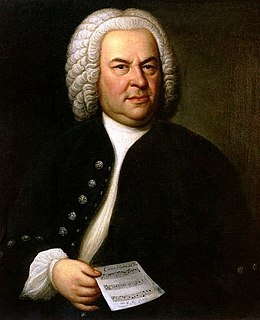 physical venues around the country are closed due to the coronavirus epidemic. We all are surprised and perplexed by the speed with which the illness caused by the virus spreads around the world, but it wouldn’t be an unusual event for Bach: epidemics were regular in 18th century Germany, as they were in the rest of Europe and the world. In 1708-09 an epidemic of influenza hit Germany; who knows, maybe it was caused by a virus similar to Covid-19. Another flu epidemic happened in 1712 and yet another – in 1742. And in 1709-12 Germany was touched by a plague which hit the hardest in the northern countries of Europe, killing 300,000 to 400,000 people. As we know, Bach’s family wasn’t spared: he fathered 20 children, of which only 10 lived into adulthood. Death was often on Bach’s mind, but as a deeply religious person he was thinking of it more as salvation from the corrupt and sinful life on Earth, rather than an ultimate tragedy we think it is in our more secular age. Here’s Bach Cantata BWV 8, Liebster Gott, wenn werd ich sterben? (Dearest God, when will I die?), composed in Leipzig in 1724. It’s performed by the Monteverdi Choir and English Baroque Soloists under the direction of John Eliot Gardiner in Santiago de Compostela, Spain in year 2000, where they were making their “Bach Cantata Pilgrimage Recordings.” You can read the poignant text of the cantata on the Bach Cantatas website.
physical venues around the country are closed due to the coronavirus epidemic. We all are surprised and perplexed by the speed with which the illness caused by the virus spreads around the world, but it wouldn’t be an unusual event for Bach: epidemics were regular in 18th century Germany, as they were in the rest of Europe and the world. In 1708-09 an epidemic of influenza hit Germany; who knows, maybe it was caused by a virus similar to Covid-19. Another flu epidemic happened in 1712 and yet another – in 1742. And in 1709-12 Germany was touched by a plague which hit the hardest in the northern countries of Europe, killing 300,000 to 400,000 people. As we know, Bach’s family wasn’t spared: he fathered 20 children, of which only 10 lived into adulthood. Death was often on Bach’s mind, but as a deeply religious person he was thinking of it more as salvation from the corrupt and sinful life on Earth, rather than an ultimate tragedy we think it is in our more secular age. Here’s Bach Cantata BWV 8, Liebster Gott, wenn werd ich sterben? (Dearest God, when will I die?), composed in Leipzig in 1724. It’s performed by the Monteverdi Choir and English Baroque Soloists under the direction of John Eliot Gardiner in Santiago de Compostela, Spain in year 2000, where they were making their “Bach Cantata Pilgrimage Recordings.” You can read the poignant text of the cantata on the Bach Cantatas website.
Two Russian composers were also born this week: the supremely talented Modest Mussorgsky, born on March 21st of 1839, who died of alcoholism at the age of 42, and Nikolai Rimsky-Korsakov, born on March 18th of 1844. They were friends (Mussorgsky was the best man at Rimsky’s wedding ceremony). Rimsky was one of the composers who edited and complete some of the works Mussorgsky left unfinished, including his opera Khovanschina. He also created a version of Mussorgsky’s masterpiece Boris Godunov; this was the version performed in the Soviet Union for years. Mussorgsky’s own revised version of 1872 is typically performed in Europe and the US and lately the Bolshoi was also staging this version.Permalink